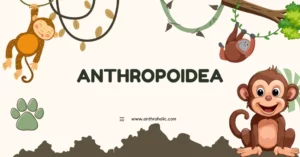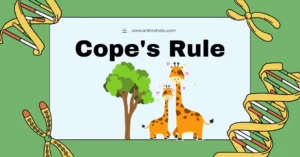AI Answer Evaluation Platform Live Now. Try Free Answer Evaluation Now
Evolutionary Adaptation
Evolutionary adaptation, also known simply as adaptation, refers to the process by which organisms evolve traits and behaviors that help them survive and thrive in their environment. This process is driven by natural selection, a core mechanism of evolution, where those individuals with beneficial traits are more likely to reproduce and pass those traits on to future generations [1].

The Mechanism of Adaptation
The primary mechanisms of evolutionary adaptation include mutation, gene flow, genetic drift, and natural selection [2].
- Mutation: Changes to an organism’s DNA can lead to new traits. Mutations are random and can be beneficial, neutral, or harmful.
- Gene Flow: This occurs when individuals from different populations mate, leading to the exchange of genetic information and potentially beneficial traits.
- Genetic Drift: This is the random change in allele frequencies within a population, which can result in certain traits becoming more common over time.
- Natural Selection: Organisms with traits that improve their ability to survive and reproduce are more likely to pass these traits on to their offspring. Over time, these beneficial traits can become more common in a population.
The relative importance of these mechanisms can vary greatly depending on the particular context and species involved.
Examples of Evolutionary Adaptation
Evolutionary adaptations are omnipresent in the biological world. Here are a few notable examples:
- Camouflage: Many animals, such as the peppered moth, have evolved coloration that helps them blend in with their environment, reducing the risk of predation [3].
- Antibiotic Resistance: Many bacteria have evolved resistance to antibiotics through the process of natural selection, posing a major challenge for modern medicine [4].
- Flight in Birds: Birds have evolved a variety of adaptations for flight, including lightweight bones, powerful muscles, and specialized feathers [5].
| Evolutionary Adaptation | Species | Benefit |
|---|---|---|
| Camouflage | Peppered moth | Reduced predation risk |
| Antibiotic Resistance | Various bacteria | Survival against antibiotics |
| Flight | Birds | Enhanced mobility, escape from predators |
Evolutionary Adaptation in Humans
Humans, too, have undergone numerous evolutionary adaptations. For instance:
- Bipedalism: Humans are the only primates that habitually walk on two legs, an adaptation that has freed up our hands for tool use and other tasks [6].
- Brain Size: Human brains are remarkably large relative to our body size, an adaptation that has enabled complex thought, language, and culture [7].
The Future of Evolutionary Adaptation
As environments continue to change, organisms will continue to adapt. The increasing speed of human-induced environmental changes, however, poses significant challenges. Rapid climate change, for instance, may outpace the ability of many species to adapt, leading to extinctions [8].
At the same time, understanding the process of evolutionary adaptation can help us address many of these challenges. For example, insights from evolutionary biology are already being used to guide efforts to slow the evolution of antibiotic resistance [9].
Conclusion
Evolutionary adaptation is a fascinating and complex process that shapes life on Earth in myriad ways. As we continue to learn more about this process, we can better understand the world around us, predict future changes, and mitigate the impacts of rapid environmental change.
References
[1] Darwin, C. (1859). On the Origin of Species.
[2] Futuyma, D.J. & Kirkpatrick, M. (2017). Evolution (4th ed.).
[3] Cook, L.M. (2003). The rise and fall of the Carbonaria form of the peppered moth. The Quarterly Review of Biology, 78(4), 399-417.
[4] Davies, J. & Davies, D. (2010). Origins and evolution of antibiotic resistance. Microbiology and Molecular Biology Reviews, 74(3), 417-433.
[5] Alexander, D.E. (2015). On the Wing: Insects, Pterosaurs, Birds, Bats and the Evolution of Animal Flight.
[6] Lovejoy, C.O. (1981). The origin of man. Science, 211(4480), 341-350.
[7] Jerison, H.J. (1973). Evolution of the Brain and Intelligence.
[8] Thomas, C.D. et al. (2004). Extinction risk from climate change. Nature, 427(6970), 145-148.
[9] Read, A.F. & Woods, R.J. (2014). Antibiotic resistance management. Evolution, Medicine, and Public Health, 1(1), 14.




